[description]
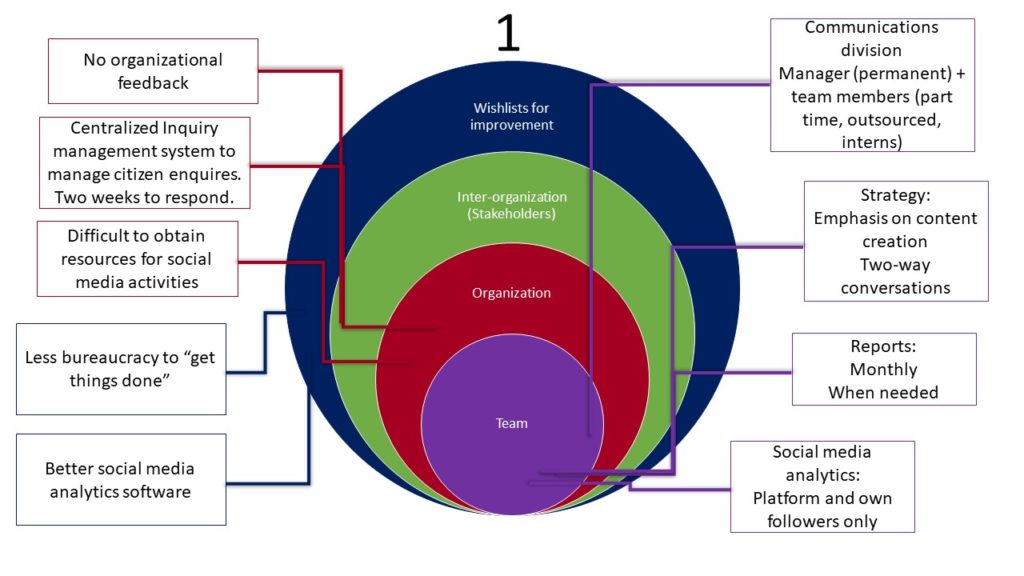
Social media is part of the communications team.
The social media component counts with a manager and team members.
Only the manager is permanent staff, the team members are either part-time employees, interns, or outsourced from other companies.
Social media is mostly used to broadcast content and campaigns. Emphasis in content creation, graphic design and video production.
Social media insights are extracted directly from the social media platforms based on own content performance and own subscribers or followers.
Citizens questions received as comments or direct messages in social media, are sourced to a centralized inquiry management system that assign requests to the relevant services to be answered within two weeks.
One monthly report is produced for management. The use and value of the insights beyond the report is unknown.
The main wish is better social media tools for analytics and less bureaucracy.
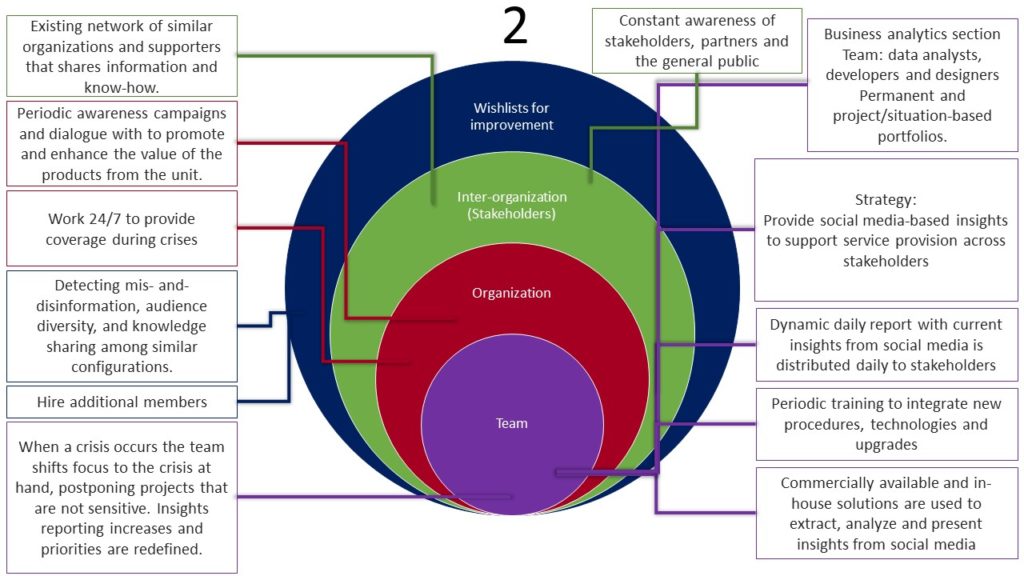
Social media is part of a business analytics section that counts with a permanent portfolio and an ad-hoc, project/situation-based portfolio. The core function is to provide social media-based insights to support the provision of services of different government agencies.
A team of data analysts, developers and designers that work together to provide data analytics services.
The team approaches daily tasks with a user experience and systems development approach.
The team constantly works to gain awareness of main stakeholders, partners, and the general public.
Workshops and trainings are conducted internally to introduce new procedures, technologies and upgrades. Externally, the team works to increase awareness of the value of the services produced in the unit.
The team has a network of similar organizations and supporters that shares information and know-how.
Both commercially available and in-house solutions are used to extract, analyze and present insights from social media.
A daily report is distributed to main stakeholders and partners summarizing findings from social media conversations in relation to the organization, current, and potential topics of concern.
When a crisis occurs the team shifts focus to the crisis at hand, postponing projects that are not sensitive. Insights reporting increases and priorities are redefined. A senior member of the team or manager is the contact point with other parts of the organization. Presence on the crisis site is ensured by deploying assets. The team counts with temporary staff that can be activated if needed to expand capabilities. Analysts turn to shift work to ensure 24/7 coverage. Room for improvement: detecting mis- and- disinformation, audience diversity, and knowledge sharing among similar configurations.
The team experiences low turnover and is currently hiring additional members.

Social media is only used during crises to inform the public.
Comments and inquiries on social media are the source of situational awareness.
Analysts are randomly selected from other units in the organization to perform social media tasks and trained on-the-spot.
There is a preestablished reporting system for incidents routed to the competent unit. Incidents detected through social media follow the same procedure.
Chain of command is sometimes ignored to implement social media.
Social media use stops once situations are in control.
Social media is an initiative of the management team in turn. Once these members leave, the future of social media in the organization is uncertain.
The organization has a strong network of organizations that provide support.
The team experiences low turnover and is currently hiring additional members.
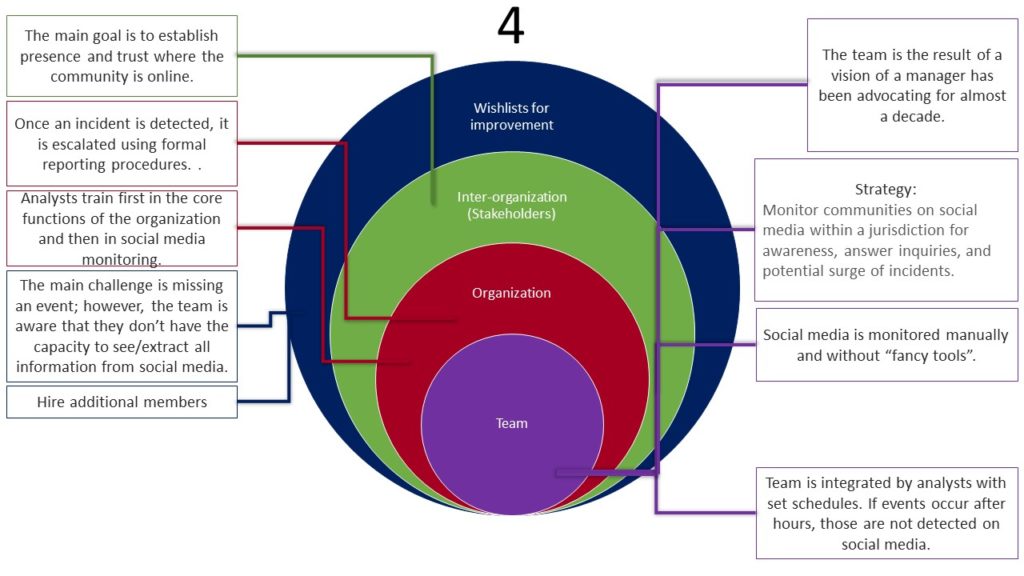
This team is exclusively dedicated to monitor social media communities within a jurisdiction for awareness, answer inquiries, and potential surge of incidents.
Social media is monitored manually and without “fancy tools”.
Once an incident is detected, it is escalated using formal reporting procedures.
The team is the result of a vision of a manager has been advocating for almost a decade.
Team is integrated by analysts with set schedules. If events occur after hours, those are not detected on social media.
Analysts train first in the core functions of the organization and then in social media analytics.
The main goal is to establish presence and trust where the community is online.
The main challenge is missing an event; however, the team is aware that they don’t have the capacity to see/extract all information from social media.
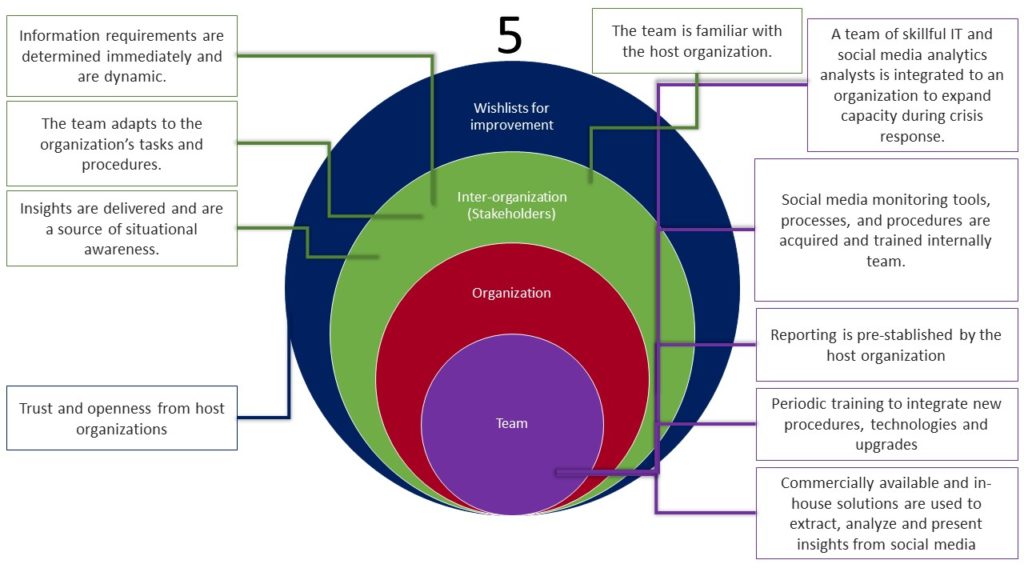
A team of skillful IT and social media analytics analysts is integrated to an organization to expand capacity.
The team is familiar with the host organization.
Information requirements are determined immediately and are dynamic.
The team adapts to the organization’s tasks and procedures.
Social media monitoring tools, processes, and procedures are acquired and trained internally team.
The organization receives insights in the established format.
Insights are trusted and are a source of situational awareness.
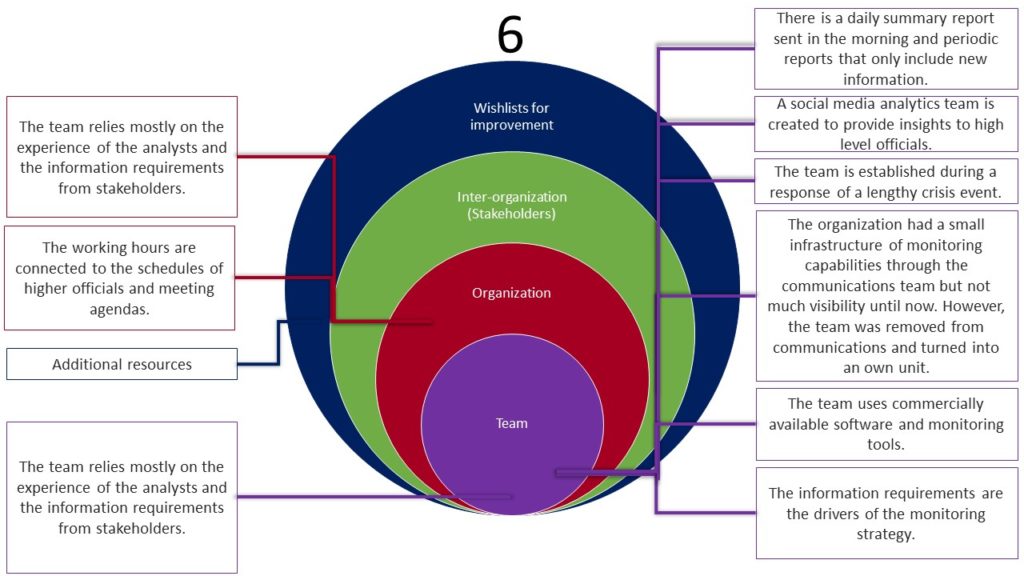
A social media analytics team is created to provide insights to high level officials.
The team is established during a response of a lengthy crisis event.
The organization had a small infrastructure of monitoring capabilities through the communications team but not much visibility until now. However, the team was removed from communications and turned into an own unit.
The team uses commercially available software and monitoring tools.
The team relies mostly on the experience of the analysts and the information requirements from stakeholders. The information requirements are the drivers of the monitoring strategy.
There is a daily summary report sent in the morning and periodic reports that only include new information.
The working hours are connected to the schedules of higher officials and meeting agendas.
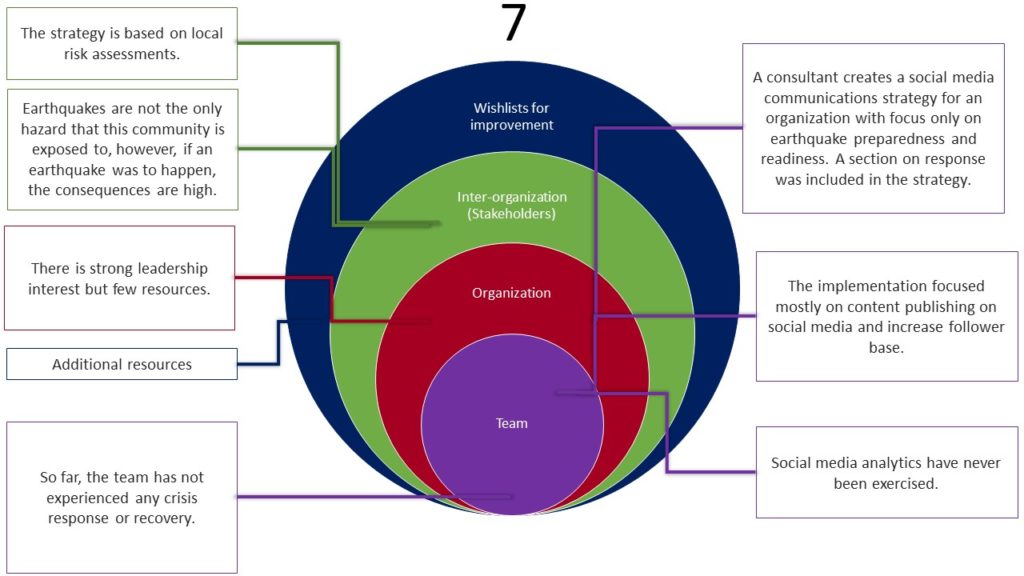
A social media analytics team is created to provide insights to high level officials.
The team is established during a response of a lengthy crisis event.
The organization had a small infrastructure of monitoring capabilities through the communications team but not much visibility until now. However, the team was removed from communications and turned into an own unit.
The team uses commercially available software and monitoring tools.
The team relies mostly on the experience of the analysts and the information requirements from stakeholders. The information requirements are the drivers of the monitoring strategy.
There is a daily summary report sent in the morning and periodic reports that only include new information.
The working hours are connected to the schedules of higher officials and meeting agendas.